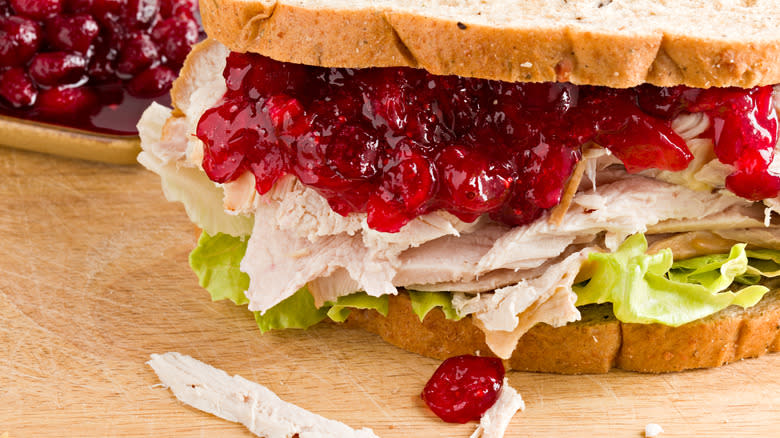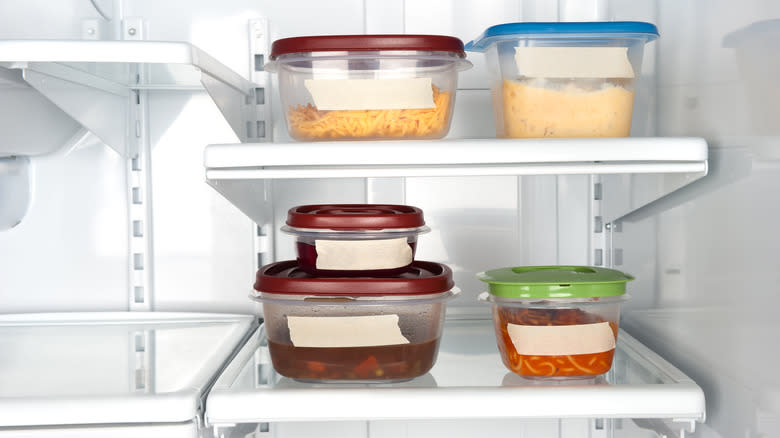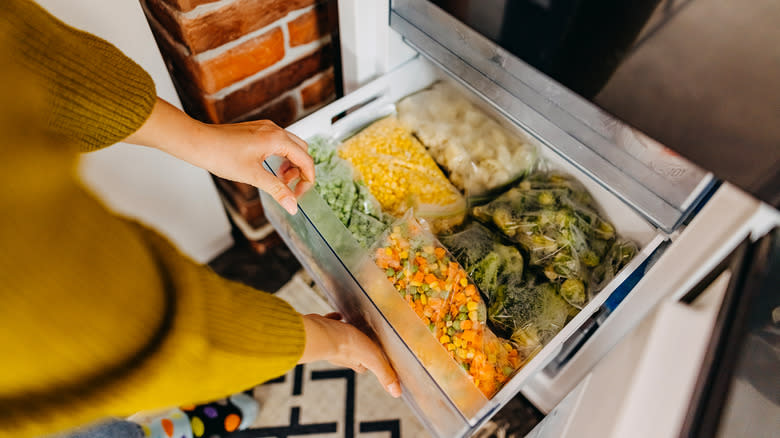The 2-2-2 Rule Will Keep Your Leftovers Fresh And Safe

The holidays are the one time of year when we routinely over-produce dishes -- even when anticipating a crowd of dinner guests. There's something about cranking out tasty appetizers and baking unique holiday desserts from around the world that underscores festive feelings of abundance and fellowship. Not to mention the fact that leftovers can be a beautiful thing, as anyone who's ever made a roast turkey, collard green, and cranberry sauce sandwich knows.
But even more important than eating well is the need to observe basic food safety standards. Food-borne illnesses can be nasty in the best of cases and fatal in the worst, so to keep you and your loved ones healthy, remember the 2-2-2 rule: two hours to get cooked food into the fridge, two days to eat leftovers before freezing, and two months in the freezer.
The goal is to keep perishable foods out of what is known as the temperature Danger Zone, according to FoodSafety.gov; that is, between 40 and 140 degrees Fahrenheit. These are the conditions that most encourage bacterial growth and proliferation. It typically takes two hours for cooked food to cool down to Danger Zone temperatures (hence the first "2" in the 2-2-2 rule), but bear in mind that foods subjected to ambient temperatures above 90 degrees Fahrenheit should be refrigerated after only an hour -- good to know when transporting food in a hot car to a summertime picnic.
Read more: The Best Way To Clean That Nasty Grease Off Of Your Kitchen Cabinets
Two Days In The Fridge, More Or Less

As a general rule of thumb (and following the 2-2-2 rule), try to eat refrigerated leftovers within two days. While this rule errs on the side of caution (most raw meats and fish are good for two days in the fridge, according to the FDA's Refrigerator and Freezer Storage Chart), you've still only got four days max before refrigerated leftovers start to become unsafe to eat. This is because colder, non-freezing temperatures only delay bacterial growth, they don't stop it.
In addition, there are some types of leftovers (rice and seafood, for example) that carry a higher risk of contamination and should be consumed more quickly, so it's good to familiarize yourself with more tips for eating leftovers. So, what is the fail-safe way to store leftovers? Freeze them; even super-perishable raw foods like pork sausage will last up to two months when frozen.
Two Months In The Freezer, But Learn To Thaw

Freezing leftovers might be the safest food storage option, but don't assume that keeping foods at 0 degrees Fahrenheit kills bacteria and microbes. it doesn't, according to the USDA. Rather, the little bugs are just immobilized, waiting to wake up again when things warm up. So, this leads to another important food safety topic, which is not whether to freeze but how to thaw -- and it's definitely not by letting food sit out on the countertop!
Instead, you can thaw frozen food safely one of three ways: in the refrigerator (though it will need to sit there at least overnight if not for a couple of days); in cold water (after first being placed in a leak-proof plastic bag; or in the microwave. Just remember that once your leftovers are hot enough to eat, you've got two hours to consume, refrigerate, or refreeze them. So, cook up a storm, share that eating experience with everyone you love, and be safe about food storage and handling by remembering the 2-2-2 rule.
Read the original article on Daily Meal.
